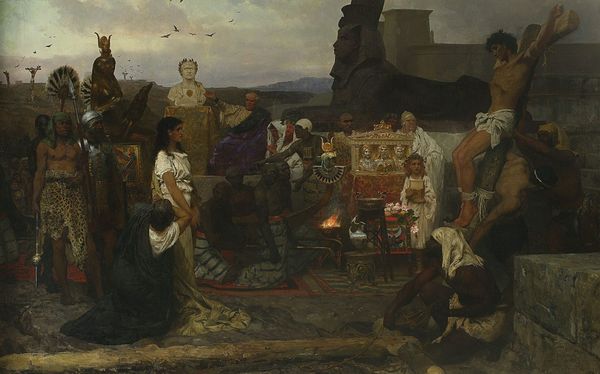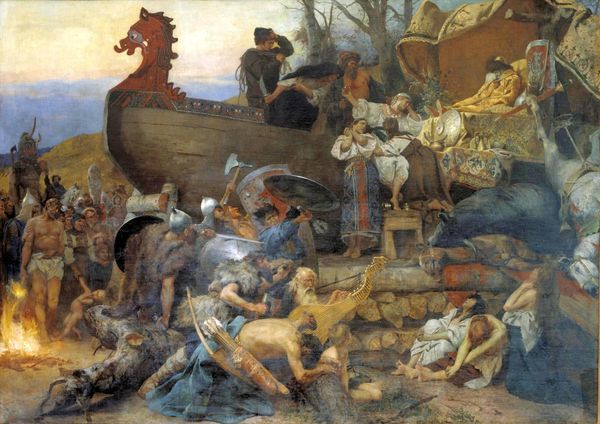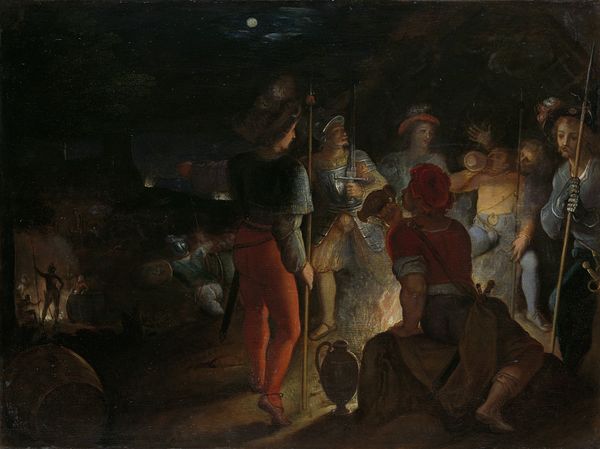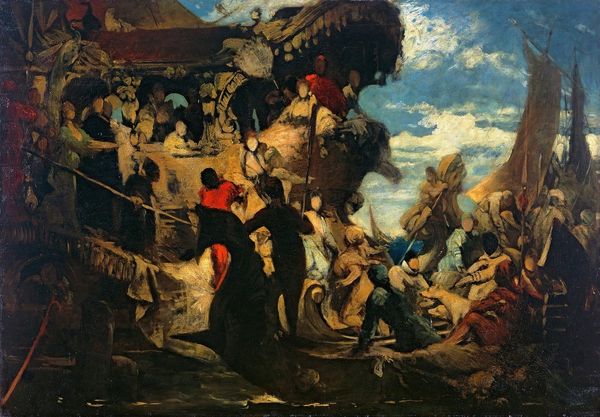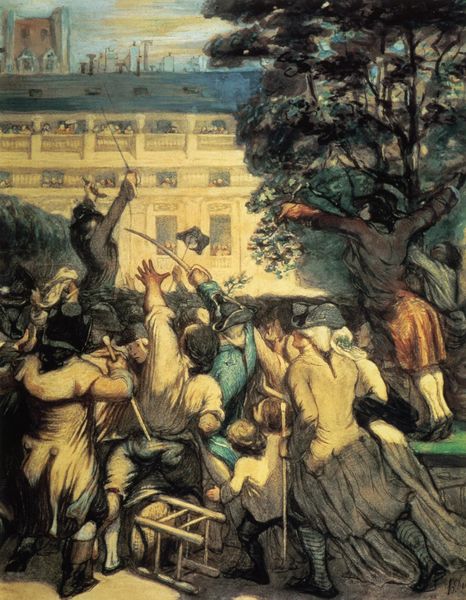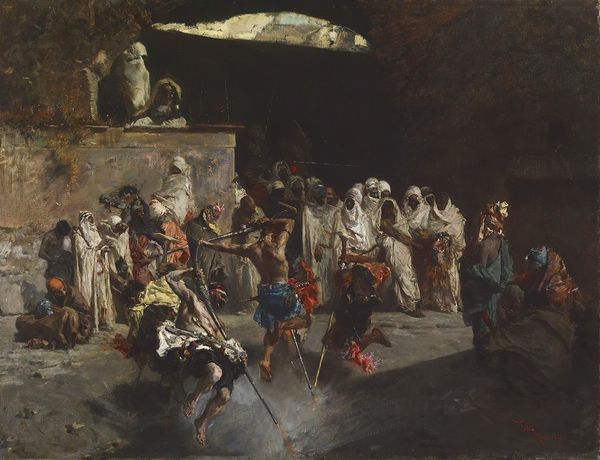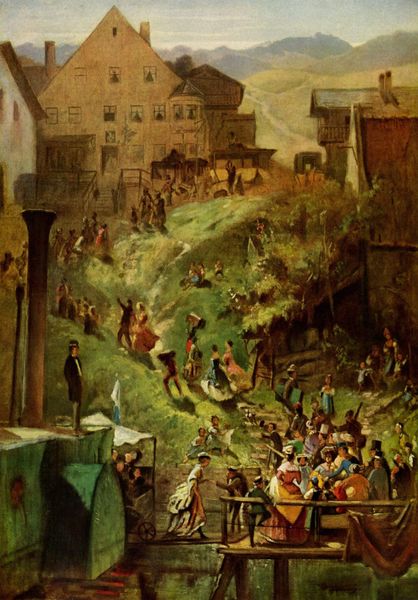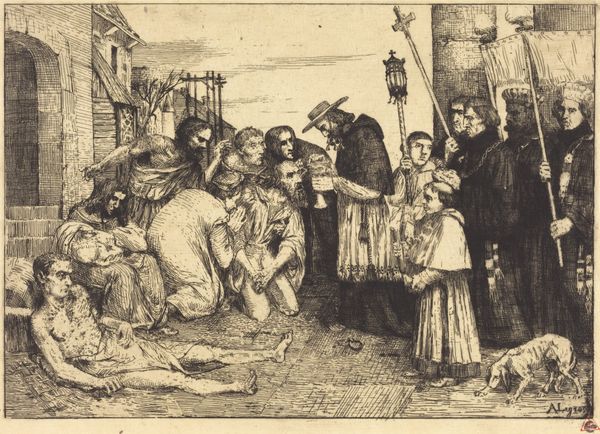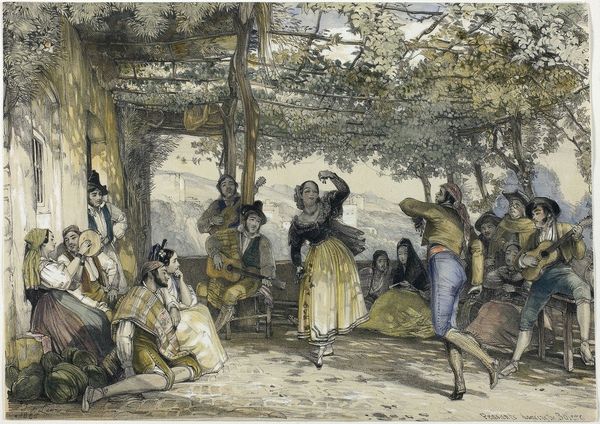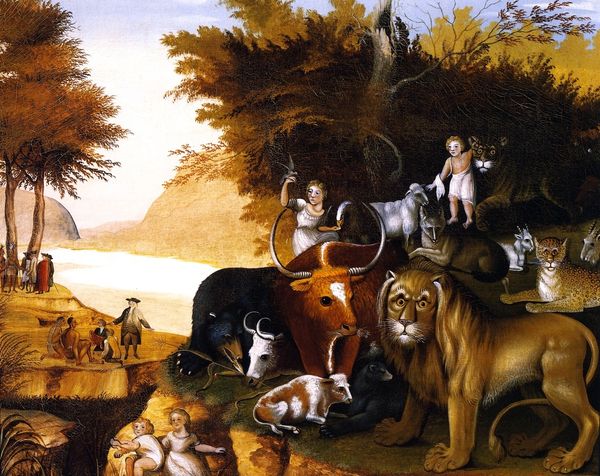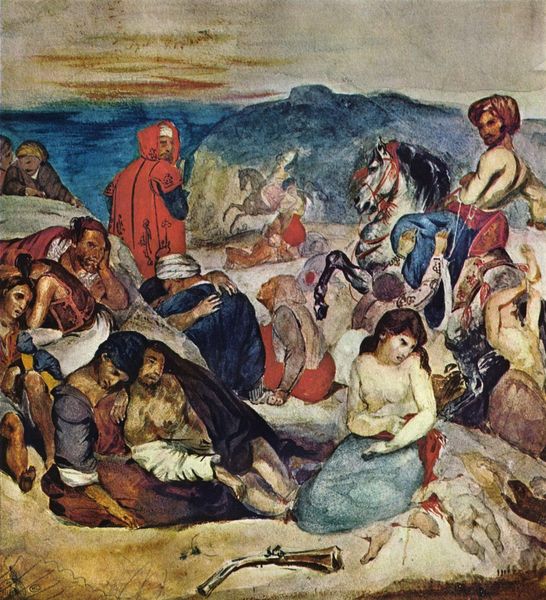
oil-paint
#
gouache
#
oil-paint
#
landscape
#
figuration
#
oil painting
#
genre-painting
#
history-painting
#
pre-raphaelites
#
modernism
Dimensions: 197.3 x 137 cm
Copyright: Public domain
Curator: At first glance, I am struck by the chaos. It's almost overwhelming in its depiction of... well, *work.* Editor: Indeed. What we see here is Ford Madox Brown’s “Work,” painted in 1863. A large canvas in oil, it's currently held at the Manchester Art Gallery. It is such an intricately designed painting. Curator: Yes, the figures feel crammed together, all straining toward some unseen goal. Even the palette feels dense, thick. There's almost a suffocating energy. Are those really dogs beneath the cart near the lower center of the canvas? Editor: You have a keen eye. Those dogs appear to have very humanistic faces, like symbols of loyalty. Also, the figures are anything but random. Brown explicitly set out to portray the various classes of Victorian society, specifically those who work, in relation to those who, as he put it, "do no work." It was designed to be a statement on the societal benefits of productive labor. Curator: So, the figures are deliberately placed and rendered. Interesting! Note how the workers—laborers, seemingly—are grouped in the center, with the leisured classes to either side. The very image conveys this theme of "workers versus idlers," or so I can’t help but interpret this based on their proximity to each other. The arrangement has to symbolize class conflict. Editor: Class awareness for sure. Beyond that, note the choice of symbols that reinforce these themes. On the left, figures with baskets seem to symbolize agrarian lifestyles or the rural poor migrating into the city for job opportunities. In contrast, to the right, those observing in top hats perhaps signify educated individuals contributing through civic duty, but removed from physical labor. They hold a social value different than pure “labor”. Curator: Is it about the types of contribution to society? I almost think it has to symbolize value, perhaps as a political or societal point for Brown's belief in how important “real” work is, whatever its class? Editor: A call for acknowledging the value of labor, certainly, given how the era struggled with industrial exploitation and wealth distribution. Considering these socio-political influences helps us look beyond simply faces in an old landscape, instead interpreting "Work" as Brown's grand thesis on productivity, societal worth, and his critique of a divided Victorian world. Curator: I see this vibrant painting from a new, refreshed, view, too. Before I thought it showed “chaos,” but now it demonstrates social commentary on work. A complex scene, indeed, so the piece will have much to consider and explore.
Comments
No comments
Be the first to comment and join the conversation on the ultimate creative platform.
